Improved metabolism and redox state with a novel preservation solution: implications for donor lungs after cardiac death (DCD)
- PMID: 28597777
- PMCID: PMC5467941
- DOI: 10.1177/2045893217706065
Improved metabolism and redox state with a novel preservation solution: implications for donor lungs after cardiac death (DCD)
Abstract
Lungs donated after cardiac death (DCD) are an underutilized resource for a dwindling donor lung transplant pool. Our study investigates the potential of a novel preservation solution, Somah, to better preserve statically stored DCD lungs, for an extended time period, when compared to low-potassium dextran solution (LPD). We hypothesize that Somah is a metabolically superior organ preservation solution for hypothermic statically stored porcine DCD lungs, possibly improving lung transplant outcomes. Porcine DCD lungs (n = 3 per group) were flushed with and submerged in cold preservation solution. The lungs were stored up to 12 h, and samples were taken from lung tissue and the preservation medium throughout. Metabolomic and redox potential were analyzed using high performance liquid chromatography, mass spectrometry, and RedoxSYS®, comparing substrate and pathway utilization in both preservation solutions. Glutathione reduction was seen in Somah but not in LPD during preservation. Carnitine, carnosine, and n-acetylcarnosine levels were elevated in the Somah medium compared with LPD throughout. Biopsies of Somah exposed lungs demonstrated similar trends after 2 h, up to 12 h. Adenosine gradually decreased in Somah medium over 12 h, but not in LPD. An inversely proportional increase in inosine was found in Somah. Higher oxidative stress levels were measured in LPD. Our study suggests suboptimal metabolic preservation in lungs stored in LPD. LPD had poor antioxidant potential, cytoprotection, and an insufficient redox potential. These findings may have immediate clinical implications for human organs; however, further investigation is needed to evaluate DCD lung preservation in Somah as a viable option for transplant.
Keywords: metabolomics; organ longevity; transplant.
Figures
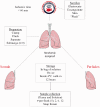
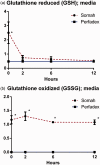
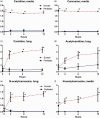

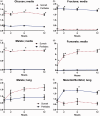
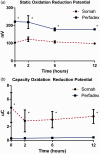
References
-
- Valapour M, Skeans MA, Heubner BM, et al. OPTN/SRTR 2012 Annual Data Report: lung. Am J Transplant 2014; 14 Suppl. 1: 139–165. - PubMed
-
- Yusen RD, Christie JD, Edwards LB, et al. The Registry of the International Society for Heart and Lung Transplantation: Thirtieth Adult Lung and Heart-Lung Transplant Report–2013; focus theme: age. J Heart Lung Transplant 2013; 32(10): 965–978. - PubMed
-
- Yusen RD, Shearon TH, Qian Y, et al. Lung transplantation in the United States, 1999–2008. Am J Transplant 2010; 10(4 Pt 2): 1047–1068. - PubMed
-
- Wigfield CH, Love RB. Donation after cardiac death lung transplantation outcomes. Curr Opin Organ Transplant 2011; 16(5): 462–468. - PubMed
-
- den Hengst WA, Gielis JF, Lin JY, et al. Lung ischemia-reperfusion injury: a molecular and clinical view on a complex pathophysiological process. Am J Physiol Heart Circ Physiol 2010; 299(5): H1283–1299. - PubMed
LinkOut - more resources
Full Text Sources
Other Literature Sources

